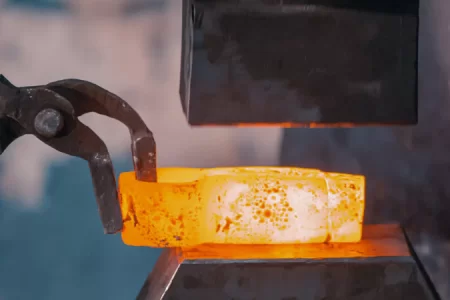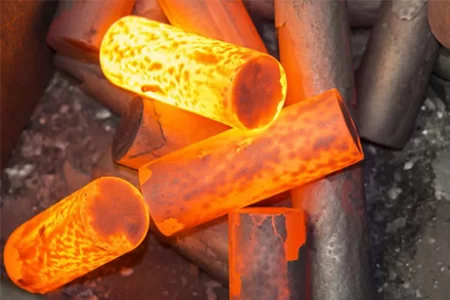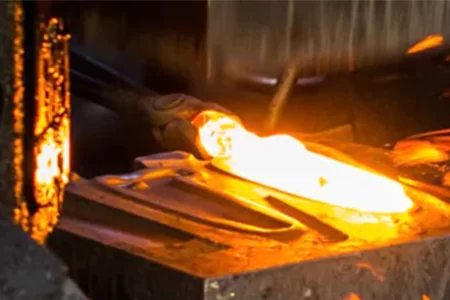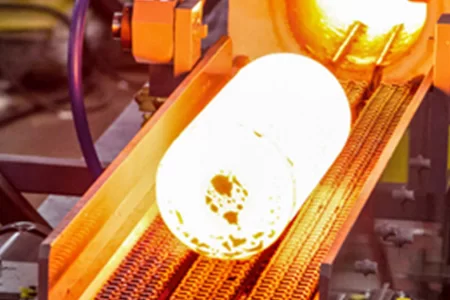By sharing knowledge, experience and views in the field of forging technology, we help you understand, learn and apply relevant technologies.

Hulk Metal Forging Technology
Share technical experience
-
Home>
-
Blog>
-
Technology>
How to Choose the Perfect Cable Grips for Your Needs?

Choosing the right cable grip is essential for ensuring the safety and efficiency of power and communication line operations. This guide explores the materials, selection criteria, and maintenance tips for cable grips, addressing key factors such as wire and cable types, outer diameters, and maximum safe loads. By understanding these crucial elements and following best practices, you can enhance the performance and longevity of your cable grips, ensuring they meet the demands of various usage scenarios and contribute to the reliable operation of your systems. Discover how to select and maintain the perfect cable grips for your needs.
Material of Cable Grips
Cable grips are crucial tools in the power and communication industries, and the selection of their materials is of utmost importance. Generally, cable grips are made from high-toughness aluminum alloy through die forging. This material not only offers high strength and toughness but is also lightweight, making it convenient to carry and operate. Additionally, aluminum alloy has excellent corrosion resistance, allowing the grips to be used in harsh environments for extended periods without easily deteriorating, thus ensuring their longevity.
In the manufacturing process, precise die forging technology is employed, resulting in higher structural strength and stability for the grips. Die forging not only effectively reduces material waste but also improves the processing accuracy of the grips, enabling them to hold the wires more securely during use and preventing slippage. Therefore, cable grips made from aluminum alloy through die forging are easier to operate, hold firmly, and are durable.
How to Choose the Right Cable Grips
To ensure the correct handling of wires and cables, the following key factors should be carefully considered when selecting cable grips:
Type of Wires and Cables
Different types of wires and cables vary in structure and materials, necessitating the selection of corresponding cable grips. For example, specific aluminum alloy cable grips can be chosen for common aluminum conductors and ACSR (Aluminum Conductor Steel Reinforced), while special cable grips are required for specialized cables.
Diameter of Wires and Cables
The diameter of the wires and cables directly determines the choice of grip jaws. The size and shape of the jaws need to match the cable diameter to ensure no damage occurs during gripping. Proper jaws can effectively distribute the pressure, preventing excessive local stress that could deform or damage the cables.
Maximum Safe Load
Each type of cable grip is designed with a specified maximum safe load value, representing the maximum tensile force the grip can withstand during use. Users should select cable grips with a maximum safe load value greater than or equal to their actual requirements to avoid safety accidents due to overloading.
These three factors are detailed in the manuals of various cable grips, which include built-in jaw profile diagrams for easy and intuitive selection. Correctly choosing the grip jaws can prevent damage to the wires and cables, ensuring safety and reliability during use.
Jaw Length
When pulling and securing stranded wires, the jaw length should be sufficient to accommodate the entire cable strand, preventing damage. Insufficient jaw length can lead to excessive local stress on the cable, damaging its structure and performance. Therefore, jaw length is also a crucial factor to consider when selecting cable grips.
Different Usage Scenarios
Cable grips can be categorized into several types based on different usage scenarios and requirements:
Aluminum Alloy Overhead Line Cable Grips
Main Purpose: Used to adjust sag and tighten overhead power lines.
Features: These grips are made from high-toughness titanium-magnesium aluminum alloy through precision forging, making them lightweight and easy to operate. They are suitable for tightening aluminum conductors and ACSR, offering high durability and service life.
Application Scenarios: Widely used in the erection and maintenance of power lines, especially in situations requiring frequent adjustment and tightening of cables.
Double Cam Cable Grips
Main Purpose: Suitable for adjusting the guy wires and grounding wires of poles and towers, offering flexible use.
Features: Double-cam cable grips feature a dual-jaw design that holds cables more securely, preventing slippage. The jaws are specially tempered for high hardness and wear resistance.
Application Scenarios: Mainly used for adjusting guy wires and grounding wires in power line setups, suitable for high-altitude operations and complex environments.
Universal Cable Grips
Features: Universal cable grips are made from high-quality carbon steel through forging, with specially tempered jaws for high strength and durability. The jaws are equipped with safety devices to prevent wire slippage, ensuring operational safety.
Application Scenarios: Suitable for securing various types of cables, particularly in situations requiring high strength and safety, such as large-scale power projects and communication line setups.
Usage and Maintenance Precautions
To ensure the service life and safety of cable grips, users should pay attention to the following points during use and maintenance:
1. Regularly inspect all parts of the cable grips, especially the jaws, to ensure they are not worn or deformed. Replace or repair if any abnormalities are found.
2. Carefully read the usage instructions of the cable grips before use and operate strictly according to the manual to avoid overloading.
3. Clean the cable grips after use, especially the jaws, to prevent the accumulation of dust and debris, which could affect their gripping performance.
4. Store the cable grips in a dry and ventilated environment to avoid moisture and corrosion, thus extending their service life.
5. Regularly lubricate the cable grips to maintain the flexibility and stability of their components, improving work efficiency.
How to Choosing a Wire Cable Grips Supplier
Our hot factory has strong production strength. We have modern production equipment and an experienced team of engineers to ensure that every production link is strictly controlled. From the purchase of raw materials to the delivery of finished products, each step is carried out according to the highest standards to ensure the stability and reliability of the products. In addition, we also have complete testing equipment and a strict quality management system to promptly discover and solve any problems in production and ensure the excellent quality of the products.
We pay attention to the quality of the wire clamp itself. We use high-quality materials and adopt advanced production processes to ensure that each wire clamp has excellent durability and reliability. Our products have undergone a number of rigorous tests, including tensile strength, corrosion resistance and service life, to ensure stable operation under various working conditions. At the same time, we continue to carry out technological innovation and product optimization, striving to achieve industry-leading levels for each product.
Cable grips are essential tools in the power and communication industries, and their material, structure, and selection are directly related to their performance and safety. When selecting cable grips, users should carefully consider the type, diameter, and maximum safe load of the wires and cables to choose the appropriate grips. Additionally, regular inspection and maintenance are crucial to ensuring the long-term use and safety of cable grips. Through scientific and reasonable selection and correct operation, cable grips can effectively perform their roles in various usage scenarios, improving work efficiency and ensuring the safe and stable operation of power and communication lines.
Article Navigation
Article Navigation
Industries
Foundries
-

July.01, 2024
Difference between hot forging and cold forging
READ MORE
-

June.27, 2024
What are the advantages and disadvantages of the hot forging process?
READ MORE
-

January.18, 2024
Forging: What Is It? What Are The Different Types of Hot Forging?
READ MORE
-

July.03, 2024
What are the processes of hot forging?
READ MORE






